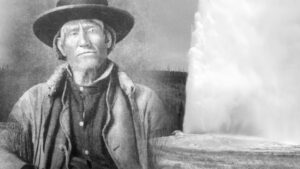The term daredevil calls to mind a crazy stuntman in leotards getting shot out of a cannon. But before Evel Knievel, before reality TV and Jackass videos, there was a bored mill worker named Sam Patch. Living an ordinary life in the cotton mills in New Jersey, Patch made an art, a living, and a legacy out of his own boredom. His talent: waterfall jumping.
Humble beginnings
Before his rise to fame, Patch lived quietly in Rhode Island. He came from a family of farmers who had endured economic hardship for generations. To help carry the load, Patch started working in a cotton mill in Pawtucket at the age of eight. Child labor was quite common at the time, as the economy started to shift from agriculture to factory work.
Sometimes, he and a few others broke the monotony with shenanigans like jumping from rooftops and waterfalls. It wasn’t just a break from the mind-numbing work. Patch had a morbid fascination for danger and an interest in evolving techniques to minimize it.

An illustration of Sam Patch leaping. Photo: ‘Old Ironsides, the hero of Tripoli and 1812, and other tales and adventures on sea and land’
He tried to establish his own cotton business but failed due to his partner’s sneaky dealings. Thereafter, Patch reverted to being a cotton mill worker at Hamilton Cotton Mills in Paterson, New Jersey. He was 20 years old.
Patch desperately dreamed of a life beyond the factory walls. Still doing jumps for fun, he started to play around with the idea of jumping as a profession. Patch publicly declared that he would jump from a bridge over Passaic Falls. Evading pesky police, he made his first public jump in September 1827. And thus, his unusual career path as a waterfall jumper/daredevil began.
The Jersey Jumper
He cultivated several nicknames: The Jersey Jumper, The Daring Yankee, and The Great Descender. His craft went beyond jumping recklessly from great heights. He blossomed from a lower-class worker into a captivating performer. He made speeches, wore costumes, and (unfortunately, by today’s standards) included his pet bear cub in his stunts.
Ordinary folk looked up to him as what Janet M. Davis from the University of Texas at Austin calls a “proletariat daredevil”. In those times, celebrities normally came from the upper echelons of society.
Patch jumped from any impressive height he could find, before audiences of up to 12,000. The curious came from all over New York State to see him, including those from both upper and lower classes.

Cover of a book on Sam Patch. Photo: The Wonderful Leaps of Sam Patch (1870)
However, since the public can be fickle and easily bored, he had to constantly up the stakes to keep the crowd interested and their dollars flowing. Eventually, he decided to embark on an ultimate stunt: to jump from a platform above Niagara Falls.
On October 7, 1829, he became the first person to survive a jump from the famous landmark. He did this feat twice.
Then he chose to jump from the High Falls of the Genesee River in Rochester on November 6, 1829. Sadly, he enlisted his pet bear cub for this stunt. He tossed the poor creature into depths and followed after it. Both he and the cub were unharmed. However, Patch was dissatisfied with the turnout and proceeds. He advertised his next jump as his last, which turned out to be tragically correct.
(Un)foreseen death
On his second jump from the High Falls a week later, his streak of luck ended. Before his jump, Patch had been drinking heavily with a friend, which might have been responsible for his demise. Witnesses say that Patch climbed clumsily to the platform and gave a brief speech along the lines of, “Napoleon was a great man and a great general…but he couldn’t jump the Genesee Falls.”
He then launched himself off the platform. Accounts vary as to what happened. Some say that instead of his usual clean leap, he waved his arms urgently. Others swear that they saw him slump on the way down. Some claim that he hit the water on his side. Whatever the case, the crowd knew something wasn’t right, as Patch did not resurface and wave to them smiling as he usually did.
His audience believed the disappearance to be part of his act. However, a local found his body four months later, frozen 11 kilometers downstream in the Genesee River. He died at age 30, with no wife or children.
Before his death, he hoped to travel to London the following year to jump from London Bridge. Newspapers had mixed opinions about him. Some praised his bravado. Others criticized his foolhardiness. “A daring and useless exposure of human life,” stated The Rochester Union after his fatal leap. “We would not dwell upon this distressing scene, and yet we cannot banish it from our thoughts.” Such reportage helped cement his reputation.
Legacy
Despite the tragic accident, he was a pioneer in stunt work, paving the way for several others. The desire for thrill and entertainment permeated the human imagination in decades to come, from Harry Gardiner, aka the Human Fly, to Rodman Law, one of the first BASE jumpers.
One can argue that he died seeking attention, that he let greed get the best of him, or charitably, that he wanted to raise himself beyond his working-class origins and inspire others to do the same. In any case, the man knew how to put on a good show.






